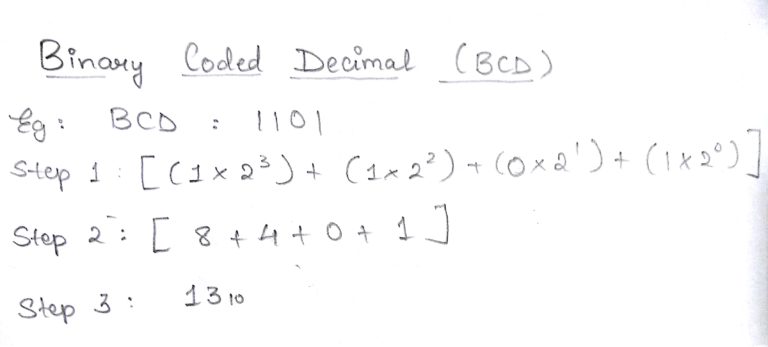Numbering Systems
In digital electronics how information is represented is key and there are different radices, i.e. number bases, that a numbering system can use, with the most common ones being: binary (base-2), octal (base-8), decimal (base 10) and hexadecimal (base 16). When a reference is made to a numbering system’s base, i.e. its’ radix, the base number represents the number of digits used in that numbering system.
Decimal Number System
The number system that we use in our day-to-day life is the decimal number system. Decimal number system has base 10 as it uses 10 digits from 0 to 9. In decimal number system, the successive positions to the left of the decimal point represents units, tens, hundreds, thousands and so on.
Each position represents a specific power of the base (10). For example, the decimal number 1234 consists of the digit 4 in the units position, 3 in the tens position, 2 in the hundreds position, and 1 in the thousands position,
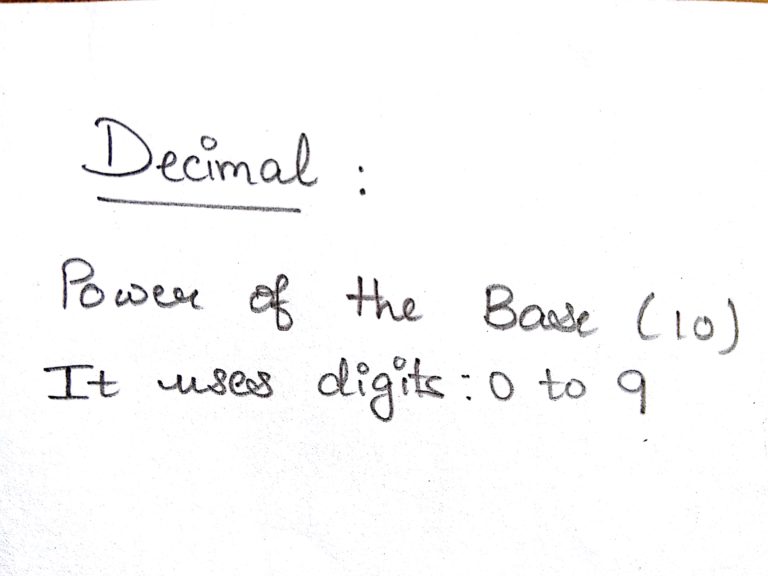
Binary Number System
Base two numbers only use the two digits 0 and 1 . Any number greater than 1 is represented by a series of 0 and 1 digits. Numbers that contain only two digit 0 and 1 are called Binary Numbers. Each 0 or 1 is called a Bit, from binary digit. A binary number of 4 bits is called a Nibble. A binary number of 8 bits is called a Byte.Similarly we can use N number of bits Here, using n bits there can be 2^n binary numbers.
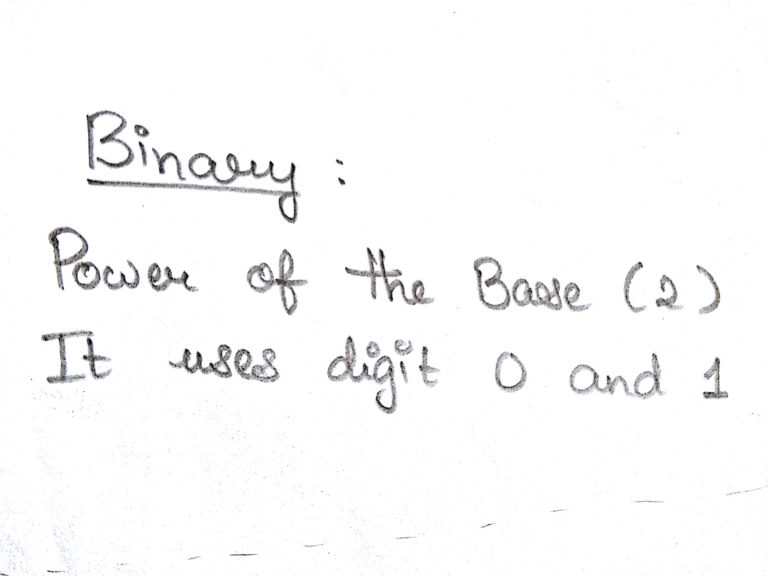
Example
Binary Number: 101012
Calculating Decimal Equivalent −
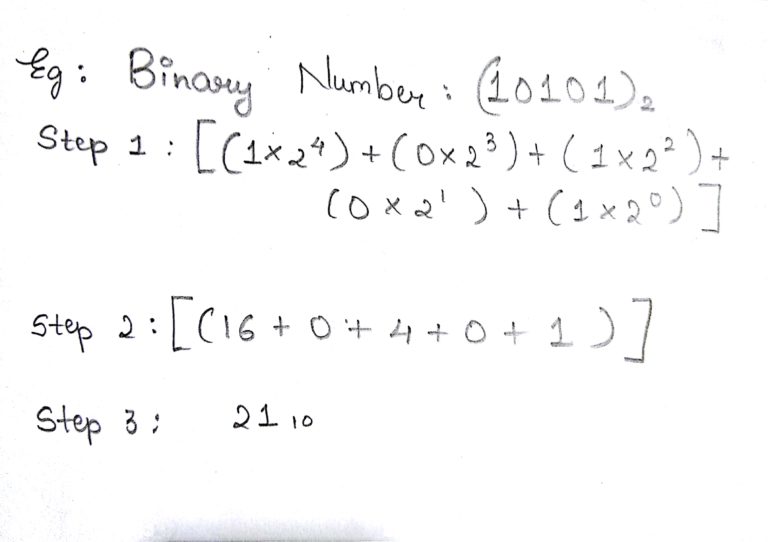
Octal Number System
The octal numeral system, or oct for short, is the base-8 number system, and uses the digits 0 to 7. Octal numerals can be made from binary numerals by grouping consecutive binary digits into groups of three (starting from the right). For example, the binary representation for decimal 74 is 1001010. Two zeroes can be added at the left: (00)1 001 010, corresponding the octal digits 1 1 2, yielding the octal representation 112.
In the decimal system each decimal place is a power of ten. For example:
74= 7 times 10^1+ 4 times 10^{0}}
In the octal system each place is a power of eight. For example:
112{8}=1 times 8^{2}+ {1} times 8^{1}+{2} times 8^{0}}
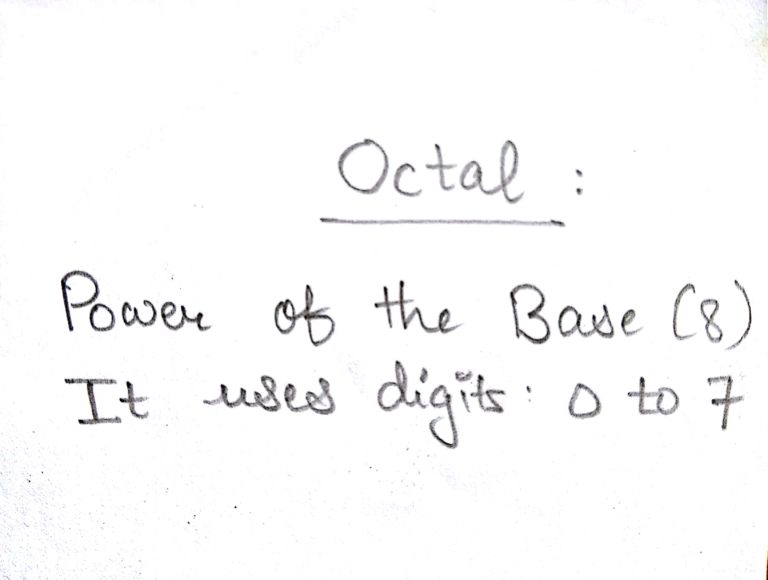
Example
Octal Number − 125708
Calculating Decimal Equivalent −
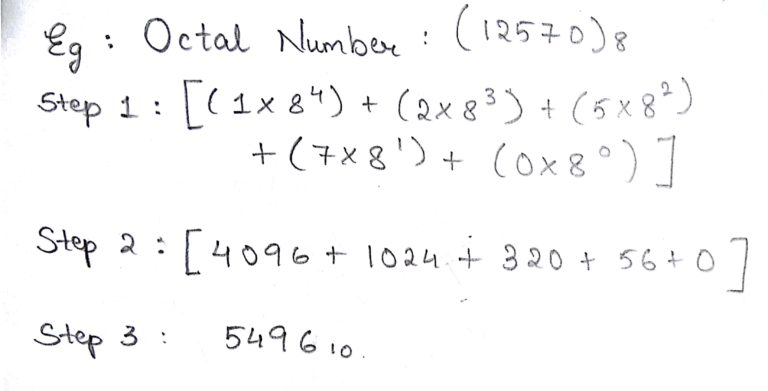
Hexadecimal Number System
In mathematics and computing, hexadecimal (also base 16, or hex) is a positional numeral system with a radix, or base, of 16. It uses sixteen distinct symbols, most often the symbols 0–9 to represent values zero to nine, and A, B, C, D, E, F to represent values ten to fifteen.
Hexadecimal numerals are widely used by computer system designers and programmers. As each hexadecimal digit represents four binary digits (bits), it allows a more human-friendly representation of binary-coded values. One hexadecimal digit represents a nibble (4 bits), which is half of an octet or byte (8 bits). For example, a single byte can have values ranging from 00000000 to 11111111 in binary form, but this may be more conveniently represented as 00 to FF in hexadecimal.
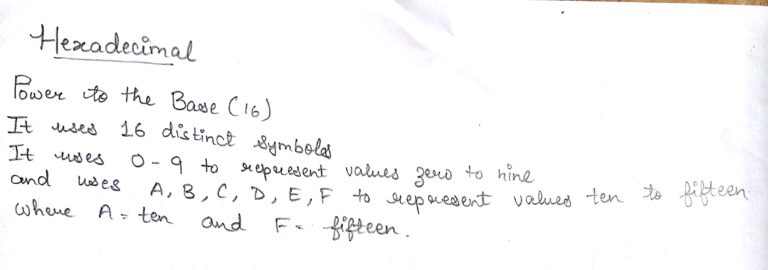
Example −
Hexadecimal Number: 19FDE16
Calculating Decimal Equivalent −
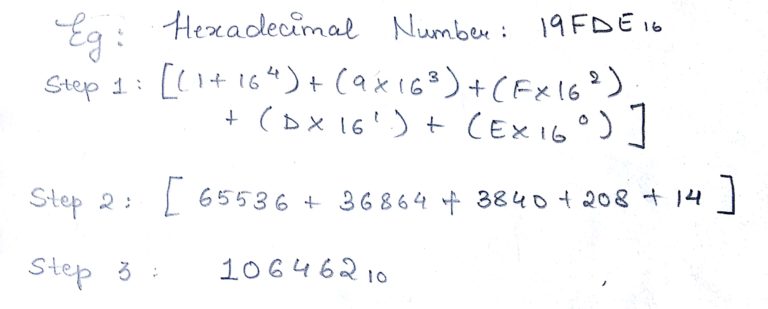
BCD(Binary Coded Decimal) Representation
When a number is stored in an electronic system, it is stored in a memory location having a fixed number of binary bits. Some of these memory locations are used for general storage while others, having some special function, are called registers. Wherever a number is stored, it will be held in some form of binary, and must always have a set number of bits. Using this system, a binary register that is n bits wide can hold 2^n values.
A 4 bit register can hold 16 values (0 to 15)
For eg:
BCD number : 1101
Calculating Decimal equivalent
